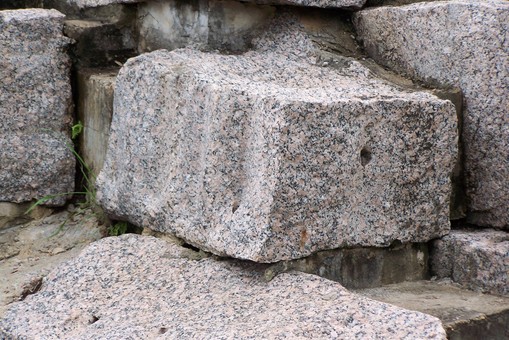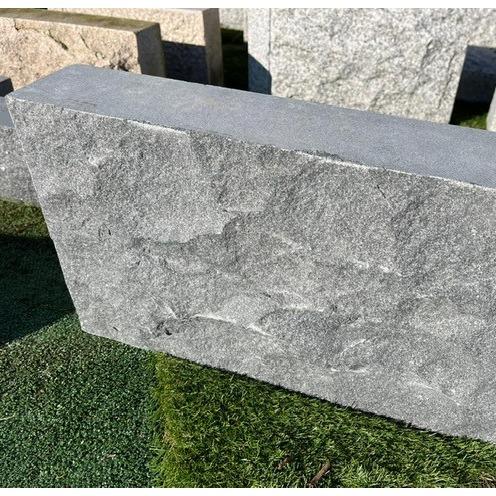Rock-Solid Sophistication: Recognizing the Visual Allure of Granite Quarries in Rustenburg
Wiki Article
The Granite Quarry Chronicles: Revealing the Splendor of Nature's Prizes
The Granite Quarry Chronicles: Revealing the Richness of Nature's Treasures is an informing exploration into the interesting world of granite quarries. This comprehensive collection of essays explores the geological marvels that form granite, the covert minerals and crystals that lie within its depths, and the old fossils and continues to be that give a peek into our planet's background. Furthermore, this publication showcases the spectacular landscapes sculpted in rock and highlights the continuous efforts to promote preservation and sustainability in granite quarrying. Written with an expert tone, The Granite Quarry Chronicles supplies a fascinating journey for nature lovers, geologists, and any person seeking a deeper understanding of the natural questions bordering us.The Formation of Granite: A Geological Wonder
The formation of granite, a geological marvel, is an intricate process that can be recognized by checking out the different stages it undertakes through the activity of subterranean pressures. Granite is an igneous rock developed deep within the Planet's crust under problems of extreme heat and stress. It starts with the melting of pre-existing rocks, such as lava or gabbro, in the lower crust or top mantle. This molten product, referred to as magma, increases in the direction of the Planet's surface with splits and crevices in the crust.As the magma slowly strengthens and cools down, it undertakes a procedure called formation. This process entails the development of mineral crystals within the magma, resulting in the development of a grainy rock with a distinctive granular texture. The key minerals present in granite consist of quartz, feldspar, and mica, which provide it its particular polychromatic look.
In time, the cooled granite rock is revealed through erosion and uplift of the Earth's surface area. It is then quarried and used extensively in building, as a decorative stone, and for numerous other functions because of its toughness, visual appeal, and resistance to weathering.
Understanding the formation of granite is necessary not only for geological exploration and research but also for valuing the elegance and importance of this natural wonder.
The Covert Marvels: Minerals and Crystals Established In Granite
Proceeding the expedition of granite's development, we explore the covert marvels of the crystals and minerals found within this remarkable rock. Granite, a grainy igneous rock composed primarily of mica, quartz, and feldspar, is known for its stamina and resilience. However, it is the existence of numerous minerals and crystals that contributes to its allure and aesthetic allure.One of the most usual minerals discovered in granite is quartz. Quartz crystals are recognized for their clearness and vivid colors, ranging from milklike white to smoky gray and also purple. These crystals not just include elegance to granite yet additionally improve its toughness and resistance to scratches and discoloration.
Another mineral typically found in granite is feldspar - granite quarries in rustenburg. Feldspar crystals come in a variety of shades, consisting of white, pink, and grey. They add to the one-of-a-kind patterns and textures seen in granite slabs, making each item of granite really unique

Along with these minerals, granite may additionally include other minerals such as biotite, amphibole, and pyroxene, which even more enhance its beauty and individuality.
Discovering the Past: Fossils and Old Remains in Granite Quarries
Checking out the midsts of granite quarries exposes a fascinating selection of fossils and old remains. These remnants from the past give beneficial understandings into the background of life in the world and supply a glance into the old ecological communities that as soon as thrived in the locations where granite quarries currently stand.Fossils discovered in granite quarries can consist of the remains of plants, pets, and even bacteria - granite quarries in rustenburg. These maintained remnants can vary from little fragments to complete skeletons, supplying scientists with crucial ideas about extinct species and the evolution of life. By examining these fossils, researchers can rebuild the previous and much better recognize the biodiversity that existed millions click to read of years back
One of one of the most amazing aspects of finding fossils in granite quarries is the conservation of fragile structures. Granite is a hard and durable rock, making it an ideal tool for protecting fossils over extended periods of time. This special conservation allows scientists to research intricate details, such as the microscopic structures of plants or the fine features of old organisms.
In addition, the discovery of old remains in granite quarries can clarify the geological background of an area (granite quarries in rustenburg). By examining the fossils and their surrounding rock layers, rock hounds can identify the age of the granite and gain insights into the environmental problems that dominated throughout its development
Breathtaking Landscapes: Nature's Masterpieces Carved in Rock
As we delve much deeper into the Granite Quarry Chronicles, we encounter the amazing charm of nature's masterpieces carved in rock. The awesome landscapes located within granite quarries are absolutely a sight to look at. additional reading These natural formations, shaped over millions of years, display the elaborate virtuosity of Nature.Granite quarries are recognized for their stunning rock formations, developed through the geological processes of erosion and weathering. The result is a landscape loaded with towering cliffs, deep crevices, and majestic heights. Each formation informs an one-of-a-kind story, disclosing the pressures of nature that have actually formed our planet.
Among one of the most remarkable attributes of these landscapes is the vivid colors discovered within the granite. The interaction of light and shadow on the rock surfaces creates an exciting aesthetic effect. From shades of grey and black to elaborate patterns of red, eco-friendly, and blue, the granite quarries show a kaleidoscope of colors that captivate the eye.
Along with their visual allure, these landscapes also offer a habitat for a diverse series of plant and pet species. The sturdy surface and distinct rock developments offer shelter and sources for a range of flora and fauna, adding to the ecological splendor of the area.
Visiting a granite quarry enables us to witness firsthand the elegance of nature's creations. It is a humbling experience that advises us of the immense power and appeal that exists worldwide around us.
Environmental Influence: Conservation and Sustainability Efforts in Granite Quarrying
The preservation of all-natural sources and the promotion of lasting techniques are critical in the granite quarrying sector. Quarrying for granite includes the extraction of huge amounts of rock from the planet, which can have a significant effect on the surrounding setting. Nevertheless, there are initiatives being made to decrease this impact and make sure the lasting preservation of these valuable sources.
In enhancement to lasting removal methods, preservation initiatives additionally concentrate on post-quarrying rehabilitation and restoration. This involves restoring quarried areas to their natural state and promoting the growth of indigenous vegetation. By replanting shrubs and trees and producing environments for wild animals, quarry websites can be transformed right into beneficial sanctuary.
Furthermore, the granite quarrying sector is actively taking part in r & d to find even more lasting alternatives to standard quarrying approaches. This consists of discovering brand-new modern technologies and products that can lower the environmental influence of quarrying operations.

Verdict
In verdict, the granite quarry narrates have revealed the impressive geological wonder of granite development, the concealed wonders of minerals and crystals found within, the unearthing of fossils and ancient remains, and the impressive landscapes carved in stone. In addition, it appears that preservation and sustainability initiatives in granite quarrying are critical for preserving nature's prizes. The richness and charm of nature discovered within granite quarries are a testament to the wonders that can be revealed when discovering the depths of the earth.The Granite Quarry Chronicles: Discovering the Splendor of Nature's Treasures is an informing expedition into the remarkable globe of granite quarries. They contribute to the distinct patterns and structures seen in granite pieces, making each piece of granite really distinctive.
As we delve deeper right into the Granite Quarry Chronicles, we run into the amazing elegance of nature's masterpieces sculpted in stone.In final thought, the granite quarry chronicles have actually exposed the remarkable geological wonder of granite development, the concealed wonders of crystals and minerals discovered within, the unearthing of fossils and old remains, and the spectacular landscapes carved in stone. The splendor and charm of nature located within granite quarries are a testimony to the wonders that can be discovered when checking out the depths of the earth.
Report this wiki page